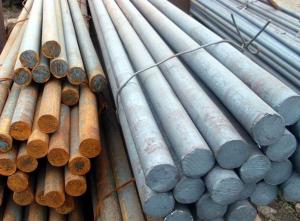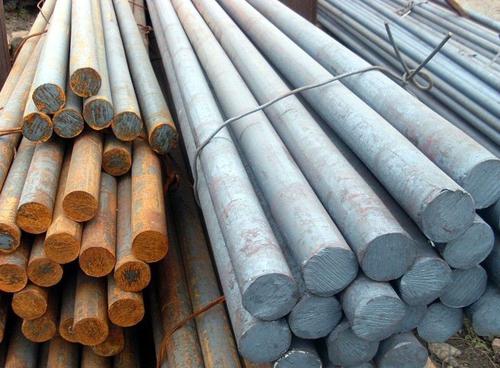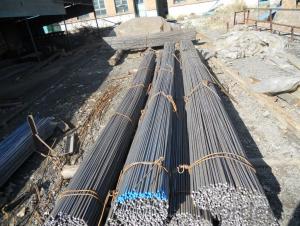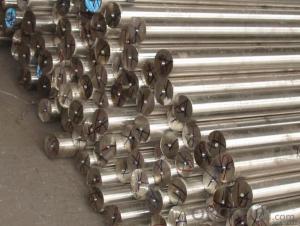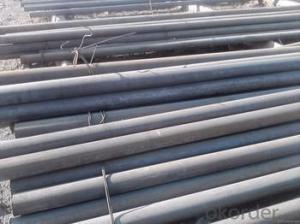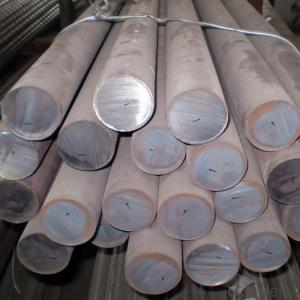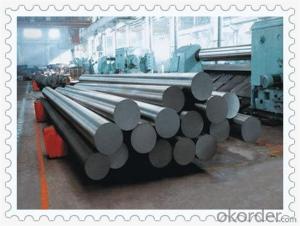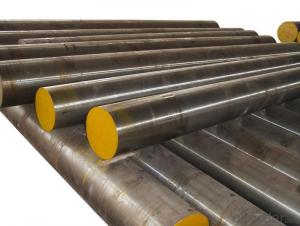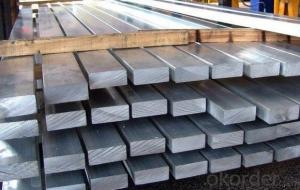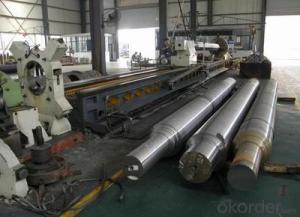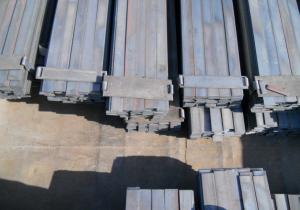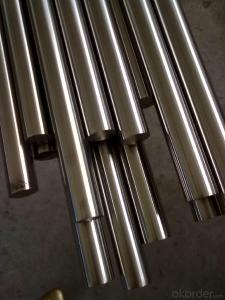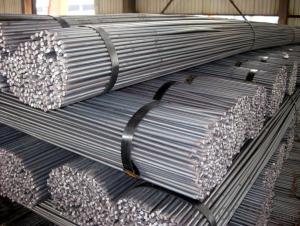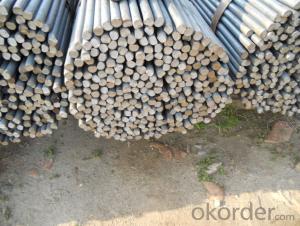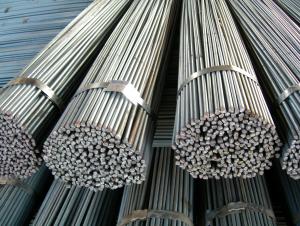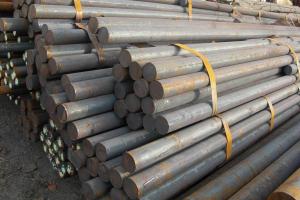Q235 stainless round steel bar for construction
- Loading Port:
- Tianjin
- Payment Terms:
- TT OR LC
- Min Order Qty:
- 25000 m.t.
- Supply Capability:
- 10000 m.t./month
OKorder Service Pledge
OKorder Financial Service
You Might Also Like
Usage and Applications
These steels are used for ball and roller bearing applications and are comprised of low carbon steels and high carbon through harden able steel.
First the famous 1C-1.5Cr steel from which the majority of bearings are made. Its structure is apparently well-understood and the focus is on purity in order to avoid inclusions which initiate fatigue during rolling contact. Then there is the M50 steel and its variants, from which bearings which serve at slightly higher temperatures in aeroengines are manufactured, based on secondary-hardened marten site.
Tapered roller bearing are generally used to support combined load mainly consisting of radial load. Their cups are separable for easy assembling ,During mounting and using, radial clearance and axial clearance can be adjusted and preloaded mounting can be made.
Packaging & Delivery
Packaging Detail: ASTM 52100 Steel in seaworthy packing or on customer request; Packed in bundles with standard export sea-worthy package or as customer require
Delivery Detail: 45 days after confirmed
Trade terms: FOB, CFR, CIF ou as customer's required
MOQ: 25 tons or at customer's demands. If the quantity is good, the price will be better.
Production Flow of Chinese Standard Round Bar
1. The common processes are preheated forging quenching, dual refinement solution process, cooling quenching and isothermal quenching. We use heat treatment for dual refinement solution process.
2. Material prepare (billet) — heat up — rough rolling — precision rolling — cooling — packing — storage and transportation
Characteristics of Chinese Standard Round Bar
1. The steel in which the main interstitial alloying constituent is carbon in the range of 0.12–2.0%.
2. As the carbon percentage content rises, steel has the ability to become harder and stronger through heat treating; however it becomes less ductile.
3. Quality should be in conformity with the specification of the manufacturer. Quantity and packing conditions should be in conformity with the term in the contract.
4. Regardless of the heat treatment, higher carbon content reduces weld ability. In carbon steels, the higher carbon content lowers the melting point.
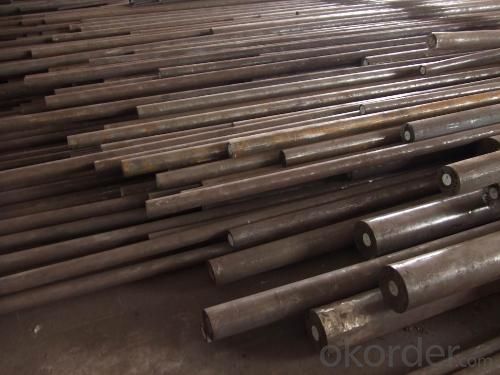
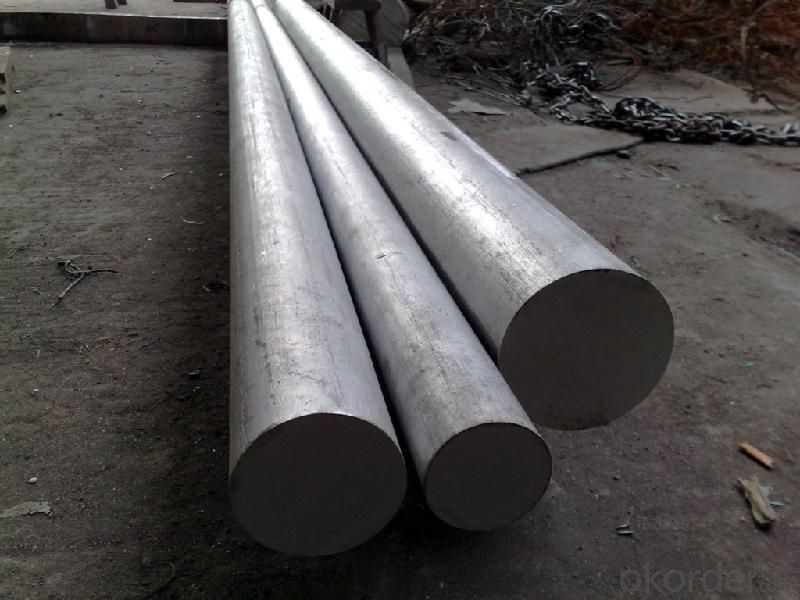
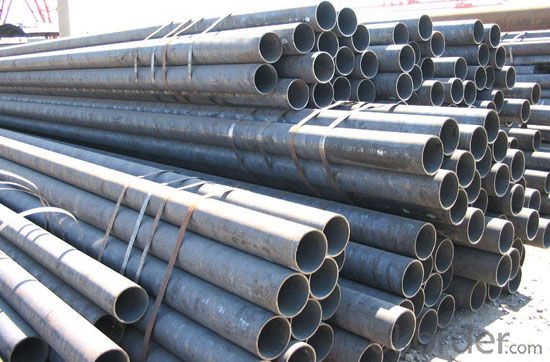
- Q: What kind of nuts do you need for round 20 rounds?
- The nut is connected to mechanical equipment parts, through the inside of the thread, the same specifications of nuts and bolts to connect together, such as M4-P0.7 and M4-P0.7 only bolt nut series connection (nut, M4 nut diameter is about 4mm, 0.7 fingers between the two thread distance of 0.7mm); US made products as well, such as screw nut only with the 1/4-20 1/4-20's collocation (1/4 refers to the nut inner diameter is about 0.25 inches, 20 inches each, 20 teeth).Self locking nut, lock nut, locking nut, four claw nut, the nut is screwed into the nut, screw rod nut insurance connecting nut cap nut six self-locking angle of anchor bolt with nut, six special angle crown thin nut eyenut.
- Q: Are the bolts for the round bar or round steel?
- The utility model relates to a pair of bolts which are used for drawing between the inner and the outer formwork of the wall when the beam and the column template are set. The bolt under concrete lateral pressure and other loads, ensure the spacing inside and outside the template can meet the design requirements, but also the template and its support structure fulcrum, so the impact on the overall arrangement of bolt, the template structure stiffness and strength greatly.
- Q: Can steel round bars be used in the aerospace manufacturing industry?
- The aerospace manufacturing industry can indeed utilize steel round bars. In various aerospace applications like structural components, landing gear, engine components, and fasteners, steel round bars are a common choice. The reason behind this is the commendable strength and durability of steel, which makes it highly suitable for critical aerospace applications. Moreover, steel round bars can be conveniently machined and shaped into intricate forms, offering customization and precise engineering solutions in the aerospace sector. Furthermore, steel's ability to resist corrosion and withstand extreme temperatures enhances its reliability in aerospace manufacturing. Ultimately, due to their strength, durability, machinability, and corrosion resistance, steel round bars emerge as a versatile and extensively employed material in the aerospace industry.
- Q: Are steel round bars available in different surface finishes?
- Yes, steel round bars are available in different surface finishes. The surface finish of a steel round bar refers to the treatment or coating applied to the surface to enhance its appearance, protect it from corrosion, or improve its performance in specific applications. Common surface finishes for steel round bars include polished, brushed, mill finish, galvanized, and coated with materials like chrome, nickel, or zinc. These different surface finishes cater to various requirements and preferences in terms of aesthetics, protection against corrosion, and functionality in different industries and applications.
- Q: Can steel round bars be used for making control arms?
- Yes, steel round bars can be used for making control arms. Control arms are important components of a suspension system in vehicles, which connect the chassis to the wheel hub. They are subjected to significant forces and stresses during operation, including torsion, bending, and compression. Steel round bars, particularly those made from high-strength steel alloys, possess excellent mechanical properties, such as high tensile strength, good ductility, and high fatigue resistance, making them suitable for control arm applications. Additionally, steel round bars can be easily machined and welded, allowing for the creation of complex and precise control arm designs. However, it is important to ensure that the selected steel round bars meet the required specifications and standards for control arm fabrication, including dimensional accuracy, material composition, and quality control.
- Q: What are the different cutting methods for steel round bars?
- Depending on the specific requirements and available equipment, there are various cutting methods that can be used for steel round bars. Here are some of the most commonly used ones: 1. Sawing: Sawing is a traditional and basic method of cutting steel round bars. It involves using a saw blade with teeth to cut through the metal. This can be done manually with a hacksaw or with the assistance of a bandsaw or circular saw. Sawing is a versatile method suitable for both small and large-scale cutting projects. 2. Shearing: Another commonly used method is shearing. It utilizes a shear machine or hydraulic press to apply high force and cut through the metal. Shearing is particularly effective for cutting thick or heavy-duty steel bars. 3. Abrasive cutting: For steel round bars with irregular shapes or precision cutting projects, abrasive cutting is often employed. This method involves using an abrasive wheel or disc to grind away the metal and create the desired cut. It can be performed manually with a handheld grinder or with the assistance of an abrasive cut-off saw. 4. Flame cutting: Also known as oxy-fuel cutting, flame cutting employs a combination of oxygen and a fuel gas to create a high-temperature flame that melts and cuts through the steel. This method is commonly used for cutting thick steel bars or shaping metal. 5. Plasma cutting: Plasma cutting is an advanced method that utilizes a plasma torch to cut through the steel. The torch generates a high-velocity jet of ionized gas, which melts and removes the metal. Plasma cutting is often preferred for precision cutting due to its greater control and ability to produce cleaner cuts compared to other methods. It is important to consider factors such as the thickness and hardness of the steel round bar, desired precision of the cut, and available equipment when selecting a cutting method. Consulting with a professional or experienced metalworker is recommended to determine the most suitable method for a specific project.
- Q: Can steel round bars be used in the manufacturing of bearings?
- Typically, steel round bars are not utilized in the production of bearings. Bearings necessitate materials with distinct qualities, such as exceptional strength, hardness, and resistance to wear. Steel round bars may not possess these attributes to the necessary extent. Instead, bearings are usually crafted from top-notch steel alloys that are specifically engineered for bearing purposes, such as bearing steel or stainless steel. These materials undergo specialized heat treatment procedures to attain the desired properties essential for bearing manufacturing, including the ability to bear heavy loads, minimal friction, and long-lasting endurance.
- Q: What is the maximum nitrogen content allowed for steel round bars?
- The maximum nitrogen content allowed for steel round bars varies depending on the specific steel grade and application requirements. However, in general, the nitrogen content is typically limited to around 0.025-0.035% to maintain the desired mechanical properties and avoid detrimental effects on the material's performance.
- Q: Are more bars used in high-rise buildings?
- The State advocates the use of new steel grades and designs responsive to national policies.Xingang are screw steel, screw thread steel with multiRound bars are often used in stirrups
- Q: How can steel round bars be protected from corrosion?
- There are various methods available for protecting steel round bars from corrosion. One common approach involves the application of a protective coating, such as paint or enamel. This coating acts as a barrier between the steel and the corrosive elements present in the environment, thereby minimizing the risk of corrosion. Another effective technique is the use of galvanization, which entails coating the steel round bars with a layer of zinc. Zinc, being a sacrificial metal, tends to corrode more readily than steel. Consequently, when the round bars come into contact with moisture or other corrosive substances, the zinc coating corrodes instead of the steel, providing an extra layer of protection. The utilization of stainless steel round bars is also highly effective in preventing corrosion. Stainless steel contains a significant amount of chromium, which forms a passive layer on the steel's surface. This passive layer acts as a shield, safeguarding the steel against corrosion caused by moisture or other corrosive agents. Regular maintenance and cleaning of the steel round bars are essential for preventing corrosion. Removing dirt, dust, and other contaminants from the surface helps to preserve the protective coating or passive layer if it exists. Additionally, keeping the round bars dry and storing them in a well-ventilated area can also aid in corrosion prevention. Proper handling and storage of steel round bars are equally important. Storing them in a dry and covered location prevents exposure to moisture and corrosive elements. It is also crucial to avoid contact with other metals or materials that can induce galvanic corrosion. By implementing these protective measures, steel round bars can be effectively shielded from corrosion, ensuring their longevity and structural integrity.
Send your message to us
Q235 stainless round steel bar for construction
- Loading Port:
- Tianjin
- Payment Terms:
- TT OR LC
- Min Order Qty:
- 25000 m.t.
- Supply Capability:
- 10000 m.t./month
OKorder Service Pledge
OKorder Financial Service
Similar products
Hot products
Hot Searches
Related keywords
